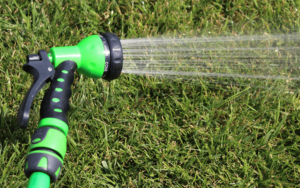As the Australian summer approaches, businesses face unique challenges that can disrupt operations, reduce efficiency, and impact bottom lines. With rising temperatures and increased demand on resources, it’s crucial for organisations to prepare for the pressures that come with the season. Here’s a breakdown of the dangers businesses face during summer surges and how to mitigate them.
1. Energy Demands and Power Outages
One of the most significant challenges businesses face during summer is increased energy consumption. Air conditioning units, refrigeration systems, and other essential equipment work overtime to combat soaring temperatures, leading to higher energy usage and increased strain on the power grid.
This heightened demand can result in power outages, leaving businesses vulnerable to operational disruptions. For industries such as retail, manufacturing, and food services, even short power cuts can cause significant losses, from halted production to spoiled stock.
Mitigation Tips:
- Install energy-efficient systems to reduce consumption.
- Invest in backup generators or uninterrupted power supplies (UPS) to maintain operations during outages.
- Work with energy providers to explore demand response programs that can minimise costs while maintaining access to power.
2. Overheating Equipment and System Failures
Heatwaves not only affect humans but also impact the performance of critical equipment. Servers, machinery, and IT infrastructure are particularly susceptible to overheating during summer. This can lead to slower processing times, hardware damage, and costly repairs.
For businesses reliant on data-driven operations, such as e-commerce and financial services, system failures during peak periods can mean lost sales and frustrated customers.
Mitigation Tips:
- Conduct regular maintenance checks on equipment, ensuring all systems are in optimal condition.
- Use cooling solutions, such as server room air conditioning or heat-dissipation technology, to protect infrastructure.
- Implement monitoring systems to detect early signs of overheating or failure.
3. Workplace Safety Hazards

Summer surges bring not only heat but also a higher risk of workplace injuries. Employees working in high temperatures, especially outdoors or in poorly ventilated areas, are at risk of heat-related illnesses such as dehydration, heatstroke, and fatigue.
For businesses in construction, agriculture, or warehousing, this can lead to reduced productivity, increased absenteeism, and even liability issues.
Mitigation Tips:
- Provide employees with access to cool drinking water and shaded rest areas.
- Schedule heavy workloads during cooler parts of the day.
- Train staff to recognise signs of heat-related illnesses and respond appropriately.
4. Supply Chain Disruptions
The summer season often coincides with extreme weather events, including bushfires, storms, and floods. These natural disasters can disrupt supply chains, delay shipments, and increase transportation costs.
For businesses dependent on timely delivery of goods, such as retailers and manufacturers, these disruptions can cause inventory shortages and missed deadlines.
Mitigation Tips:
- Diversify suppliers to reduce reliance on a single source.
- Maintain higher stock levels during summer to buffer against delays.
- Develop a contingency plan to adapt quickly to supply chain interruptions.
5. Increased Cooling Costs
Keeping premises cool during summer is essential for employee comfort and productivity. However, this comes with skyrocketing energy bills. Businesses with large spaces, such as warehouses, retail stores, or offices, often bear the brunt of these costs.
Unmanaged cooling expenses can significantly impact profit margins, particularly for small to medium-sized enterprises (SMEs) operating on tighter budgets.
Mitigation Tips:
- Invest in energy-efficient cooling systems and insulation to reduce costs.
- Use smart thermostats to optimise cooling during peak hours.
- Encourage employees to adopt energy-saving habits, such as closing windows and blinds during the day.
6. Cybersecurity Threats During Holiday Season
Summer also aligns with holiday periods, during which businesses often operate with reduced staff or altered schedules. Cybercriminals are aware of these vulnerabilities and may target organisations with phishing scams, ransomware attacks, or other malicious activities.
A successful attack during this period can lead to data breaches, financial losses, and reputational damage.
Mitigation Tips:
- Update cybersecurity protocols and ensure all software is up-to-date.
- Train employees on recognising and avoiding phishing attempts.
- Implement multi-factor authentication to add an extra layer of security.
7. Customer Service Challenges

With summer being a peak period for many industries, businesses often experience higher customer demand. Without proper planning, this surge can overwhelm customer service teams, leading to longer wait times, increased complaints, and lower customer satisfaction.
Mitigation Tips:
- Hire seasonal staff to manage increased workloads.
- Leverage technology, such as chatbots and automated systems, to handle routine inquiries.
- Monitor customer feedback and respond promptly to any concerns.
8. Environmental Compliance Risks
Australia’s strict environmental regulations can pose additional challenges during summer. High temperatures may exacerbate emissions or waste management issues, leaving businesses at risk of non-compliance. For industries such as manufacturing or mining, this can result in hefty fines or operational restrictions.
Mitigation Tips:
- Review and update environmental management plans ahead of summer.
- Invest in sustainable technologies to minimise environmental impact.
- Conduct regular audits to ensure compliance with local regulations.
Preparing for Summer Surges
While summer brings challenges, it also provides opportunities for growth and innovation. By recognising potential dangers and implementing proactive measures, businesses can maintain continuity and even thrive during this demanding season.





